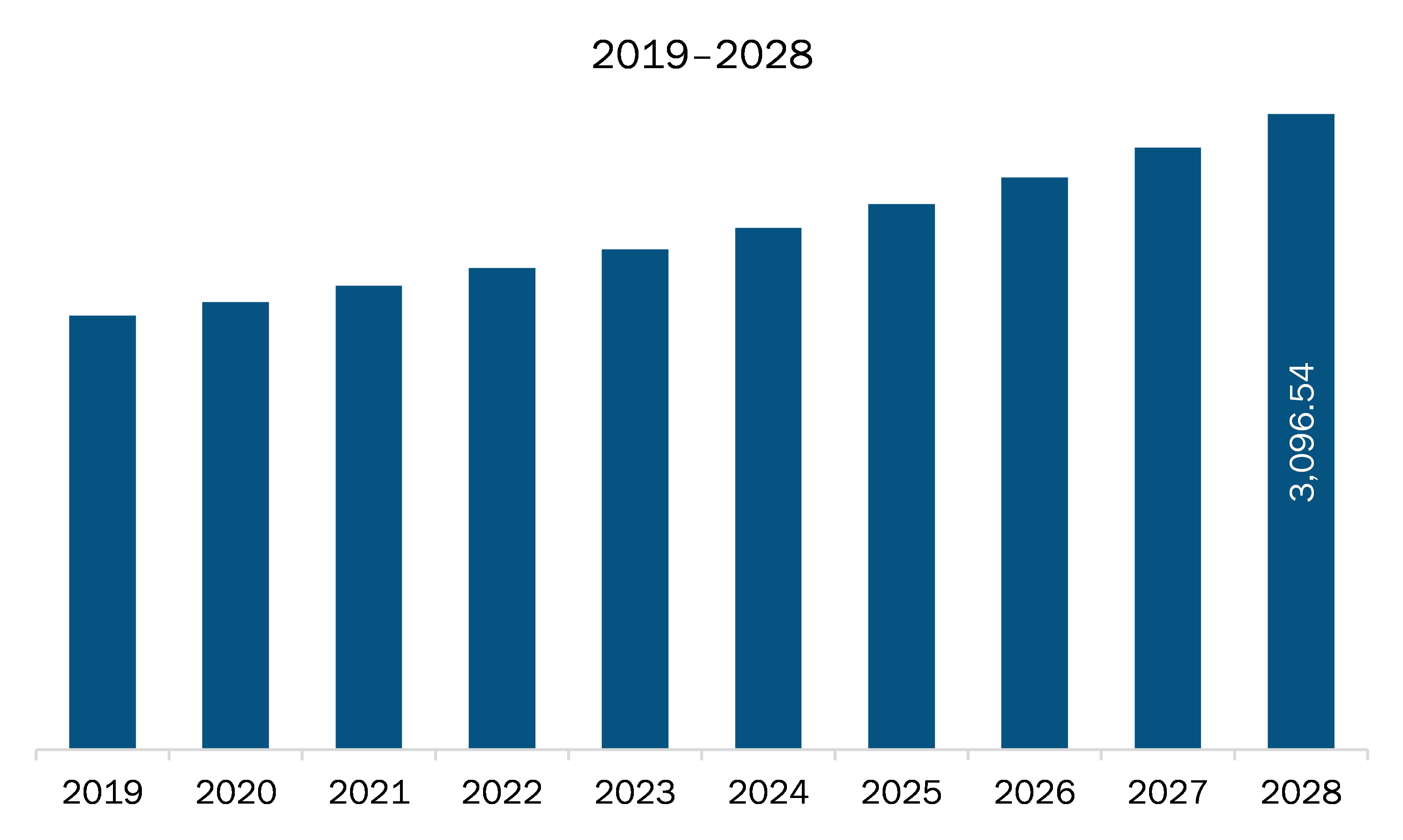The Europe insulated packaging materials market is expected to grow from US$ 2,258.89 million in 2021 to US$ 3,096.54 million by 2028; it is estimated to grow at a CAGR of 4.6% from 2021 to 2028. The UK, Germany, France, Italy, and Russia are major economies in Europe. Growing demand for temperature-sensitive products is expected to fuel the Europe insulated packaging materials market growth. Temperature-sensitive products mainly belong to the food & beverages and pharmaceuticals industries. Changing consumer lifestyles, rising per capita disposable income, and adoption of convenience products increase the consumption of processed, frozen, and packaged food products. Additionally, the export–import trade of food and beverages is increasing significantly with the rise in food demand. Globalization has enabled the successful export–import trade of such products amongst countries across the region. Frozen food requires thermally insulated packaging, containing refrigerants, to maintain product temperature. During domestic or international transportation, the temperature-sensitive goods can go through various physical and physiological stress, such as physical pressure, humidity, and fluctuating temperature. Thus, to avoid the damage of temperature-sensitive products, such as ready-to-eat products, ready-to-cook products, frozen food, vegetables, and certain medical supplies, manufacturers/packers use insulated packaging to maintain the product’s shelf-life and quality. The rising use of insulated packaging propels the demand for insulated packaging materials. In addition, rising consumer spending on packaged products and increasing output of temperature-sensitive manufactured goods propel the growth of the Europe insulated packaging materials market.
Russia is estimated to suffer an economic hit due to lack of revenue from various industries, as the country recorded the highest number of COVID-19 cases, followed by France, the UK, Italy, and Germany. The lockdown restrictions are being slowly lifted in a few countries in Europe. Europe has one of the advanced pharmaceutical and healthcare industries in the world. The demand for insulated packaging materials is expected to increase as the economies are recovering and vaccination drives are being adopted in the region.
With the new features and technologies, vendors can attract new customers and expand their footprints in emerging markets. This factor is likely to drive the Europe insulated packaging materials market. The Europe insulated packaging materials market is expected to grow at a good CAGR during the forecast period.

- This FREE sample will include data analysis, ranging from market trends to estimates and forecasts.
Europe Insulated Packaging Materials Market Segmentation
Europe Insulated Packaging Materials Market – By Material Type
- Plastic
- Wood
- Corrugated Cardboard
- Others
Europe Insulated Packaging Materials Market – By Type
- Single Use
- Reusable
Europe Insulated Packaging Materials Market – By End User
- Pharmaceutical
- Food and Beverages
- Cosmetic
- Industrial
- Others
Europe Insulated Packaging Materials Market, by Country
- Germany
- France
- Italy
- UK
- Russia
- Rest of Europe
Europe Insulated Packaging Materials Market -Companies Mentioned
- Cascades inc.
- FEURER Group GmbH
- Icertech
- Sealed Air
- TemperPack
- The Wool Packaging Company Limited
Europe Insulated Packaging Materials Report Scope
| Report Attribute | Details |
|---|---|
| Market size in 2021 | US$ 2,258.89 Million |
| Market Size by 2028 | US$ 3,096.54 Million |
| CAGR (2021 - 2028) | 4.6% |
| Historical Data | 2019-2020 |
| Forecast period | 2022-2028 |
| Segments Covered |
By Material Type
|
| Regions and Countries Covered |
Europe
|
| Market leaders and key company profiles |
|
- Historical Analysis (2 Years), Base Year, Forecast (7 Years) with CAGR
- PEST and SWOT Analysis
- Market Size Value / Volume - Regional, Country
- Industry and Competitive Landscape
- Excel Dataset
Recent Reports
Testimonials
Reason to Buy
- Informed Decision-Making
- Understanding Market Dynamics
- Competitive Analysis
- Identifying Emerging Markets
- Customer Insights
- Market Forecasts
- Risk Mitigation
- Boosting Operational Efficiency
- Strategic Planning
- Investment Justification
- Tracking Industry Innovations
- Aligning with Regulatory Trends





















 Get Free Sample For
Get Free Sample For